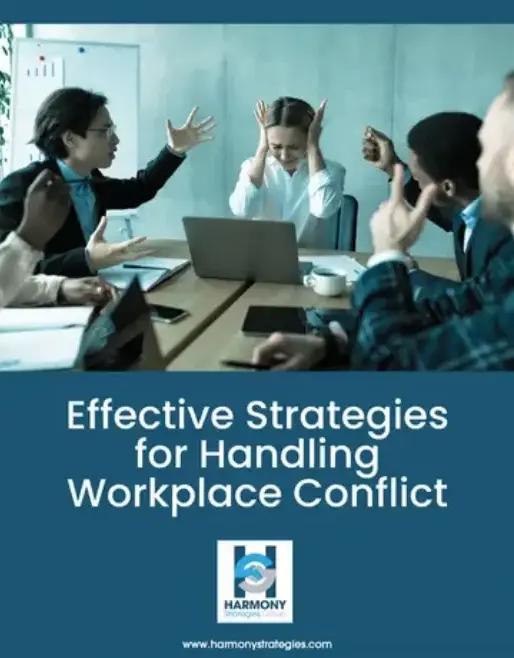“You don’t rise to the level of your strategy. You fall to the level of your relationships.”
Organizations often have risk management protocols for cyber threats, legal exposure, or financial volatility, but do they assess the elements that shape their human capital risk? Unfortunately, these risks are rarely named and discussed, let alone addressed.
Unresolved conflict, miscommunication, and team tension and breakdowns cost companies far more than they realize. Beyond interpersonal drama, they lead to project delays, lost innovation, employee attrition, and, ultimately, reputational damage.
Why This Matters Now
As the workforce evolves across generations, cultures, and working styles, the cost of poorly managed conflict is rising.
According to the CPP Global Human Capital Report, U.S. employees spend nearly 2.8 hours each week dealing with conflict, amounting to $359 billion in paid hours annually.
That’s not just lost time, it’s lost energy, trust, and collaboration. And yet, most organizations wait until the damage is done to act.
How Conflict Impacts the Bottom Line
Unaddressed conflict depletes resources in many different ways.
- Productivity Drain
Team members caught in tension spend more time avoiding one another than collaborating. Individuals become siloed and protective of their own information, reputations, and power. Rather than sharing information, materials, and ownership of success with others, teams focus on their own needs and lose sight of the bigger picture, including the organizational mission or even bottom-line. This leads to stalled or crippled projects, piled up emails, team confusion, low morale, and dragging productivity. In one study, over 85% of employees reported having dealt with conflict at some point, and 25% said it caused absenteeism or sickness (CPP, 2008).
- Talent Attrition
Conflict with managers or coworkers is one of the top three reasons people leave jobs. Moreover, high performers often walk away silently, without ever being asked what went wrong. All too often, organizations either skip or excuse data from exit interviews, losing valuable information and feedback on team weaknesses, skills deficits, and more.
- Culture Contamination
Workplace tensions don’t stay contained, rather they can spread like a virus and infect the entire culture. People gossip or emotionally shut down, psychological safety erodes, and before executive leadership or a board of directors is even aware, the conflict is no longer between two people and has affected the entire system.
- Innovation Freeze
Conflict avoidance kills creativity. When teams are tiptoeing around issues, they’re not sharing bold ideas, probing for best results, or sharing vital feedback or information. Playing it safe means withholding information that can cost dearly in fast-moving markets.
What Can Be Done?
Conflict is inevitable, but when handled well, it can become a source of clarity, connection, and improvement. Here are five steps to mitigate the human capital risk posed by workplace conflict:
- Instead of conflict being the elephant in the room, make it a standard agenda item.
- Add “tensions or challenges we’re noticing” to team meetings.
- Host harmony-building conversations after stressful moments.
Patrick Lencioni’s The Five Dysfunctions of a Team emphasizes that “the fear of conflict is one of the biggest barriers to team effectiveness.”
- Train not just leaders, but all staff in basic conflict management and communication skills.
- Use frameworks like Nonviolent Communication (NVC) or the Thomas-Kilmann Model to help with self-reflection and skills-building.
- Offer regular refreshers or learning circles.
Third-party practitioners help to:
- Prevent conflict from escalating.
- Serve as a confidential space for early resolution.
- Be a thought-partner for managers and executives to navigate through conflict and improve structures and processes.
- Offer systemic insight on recurring issues.
Start tracking “invisible” conflict indicators:
- Voluntary turnover after unresolved disputes.
- Absenteeism spikes during or after organizational change.
- Anonymous culture audit feedback.
Numbers tell one part of the story, and patterns reveal the human capital risk landscape.
Mistakes and miscommunications are inevitable. What matters is how teams come back together.
- Use post-conflict debriefs.
- Design “re-entry” conversations after major breakdowns.
- Practice appreciative inquiry to rebuild relationships.
Think about conflict as data, and continuously ask yourself and your teams: what are you learning or avoiding from conflict?
Human tension and conflicts aren’t inherent liabilities. In fact, they can be untapped sources of insight. Organizations that proactively engage with conflict don’t just reduce risk – they unlock resilience, creativity, and trust.
Managing human capital risk doesn’t mean eliminating conflict – rather, it means shifting from potential harm to harmony.
Tools and Resources
TED Talk by Amy Gallo: The Gift of Conflict
Patrick Lencioni: The Five Dysfunctions of a Team
HBR: The Leader’s Guide to Corporate Culture
CPP Global: Workplace Conflict and How Businesses Can Harness It to Thrive

